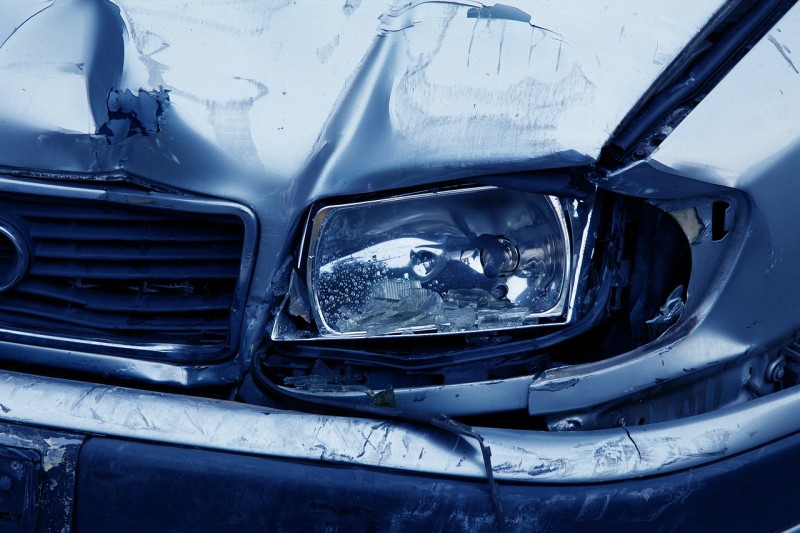
Cars are getting smarter, but how soon will we actually be able to drive a crash-free car? At the SAE World Congress, Honda Research and Development Americas president Frank Paluch says that Honda is en route to creating technology and infrastructure that supports the crash-free vision – and it might take 25 years to do so.
The goal for Honda is to establish technology that enables vehicles to communicate with each other, as well as infrastructures such as buildings and roadway obstructions. These cars won’t be telling jokes or gossiping behind your back, they’ll be relaying information back and forth, easing you through traffic faster, while avoiding collisions.
Vehicle-to-vehicle (V2V) and vehicle-to-infrastructure communications alone are able to reduce accident rates by 50 per cent. By 2040, technology in transportation will enable advancement of learning, sensing and communication – cars will become automated. According to the World Health Organization, approximately one million fatalities occur in road accidents annually. Crash-free cars may very well be the grand solution.
How Crash-Proof Cars Work
Crash-proof or crash-free cars work through a sophisticated system of sensors. The vehicle is able to detect objects within its vicinity, thus preventing itself from being driven into anything. Driving becomes an autonomous experience.
Take Google’s self driving car for example, which has surpassed the 700,000-mile mark without a single accident. It is able to track hundreds of objects, including pedestrians, cyclists, stop signs, traffic cones, etc., all at the same time.
Sensors coupled with the communication technology allow vehicles to act as an all-seeing eye for the drivers. The ability to communicate with other cars within the range of 200m to 300m offers another crash-avoidance element. Sharing data with other vehicles on the road – such as location, speed and direction – will help assess safety risks and potential hazards before it happens, rather than reacting as it happens.
A car veering into your lane, the car in front of your braking hard or a car pulling out of a blind corner can all be anticipated with sensors and V2V communication networks.
How Much of the Technology Already Exists (and Which Brands are Involved)
In many ways, crash-free cars are closer to reality than fiction. Some are already on real-world roads now, proving their case just like Google’s self-driving car. Self-parking, intelligent speed assistance, brake assist system, blind-spot warning system and a number of other features that once seemed amazing are now standard or a part of an additional safety-and-tech package. There are also a few new features in the works to make driverless cars more common: green-light timer and adaptive cruise control with cut-in detection.
Many manufactures and brands such as Honda, Ford, BMW, Mercedes, Audi and Volvo are prophesising the future, preparing for a world with automated vehicles capable of avoiding collisions. New technology today proves this.
According to ABI Research, about 80 per cent of cars in North America will be connected to a communication network by 2017. Connectivity doesn’t seem to be anything new to drivers; more and more vehicles are synced to a network the same way a personal computer is.
Known Challenges
Cars are complicated machines – even conventional ones like the Honda Civic – with many different sophisticated elements communicating with each other. There are control units within the car that monitors everything from engine performance to velocity. The challenge currently is getting vehicles to send out the data and share it with other vehicles on the road. For this to happen, manufacturers will need to work together and come up with an appropriate platform to work with.
With all our driving information flowing this way and that between cars and infrastructures, the possibility of hackers taking that data and using it for bad is plausible. Building a secure information channel is as important as developing crash-free technology and only time will tell how apt we are at both those ventures.
Another challenge – and this one is the great decider – is regulations. Before an automated driving system, like a crash-free vehicle, can be commercially produced, it must go through a lengthy procedure where every aspect is scrutinized. The technology is already there in many ways, but creating an affordable option for regular consumers might not be yet.
Final Thoughts
Seatbelts, airbags and sensors are all meant to keep us safe, and in the end, that’s all that matters. If the goal of crash-less cars is to eliminate accidents altogether, then it’s a worthwhile investment. With the way technology is moving, it’s hard to be skeptical. After all, cars are pretty much just large, powerful computers on wheels. They sync up to our phones, they knows exactly where they are positioned on the globe and they know our voice and preferred seating position. There is little doubt that in 25 years, driverless cars will indeed be seen on the streets, reducing emissions and easing traffic congestions, but truly crash-less cars might still be a pipe dream.
Cars have always been built to depreciate overtime; it’s a concept car buyers understand and accept. You’ll need to take it in for maintenance, you’ll need to check up on it, and with all the automated elements aside, you’ll still need to be a competent driver. The fear is to start treating cars the way we do other automatic appliances. We know what they do, but we don’t know how they work. Education regarding automobiles will need to change as well. A whole population of drivers will need to relearn the application of a vehicle. Cars might be able to drive themselves, but humans still need to be in control, and because of that, the term “crash-less” is still a futuristic notion.






